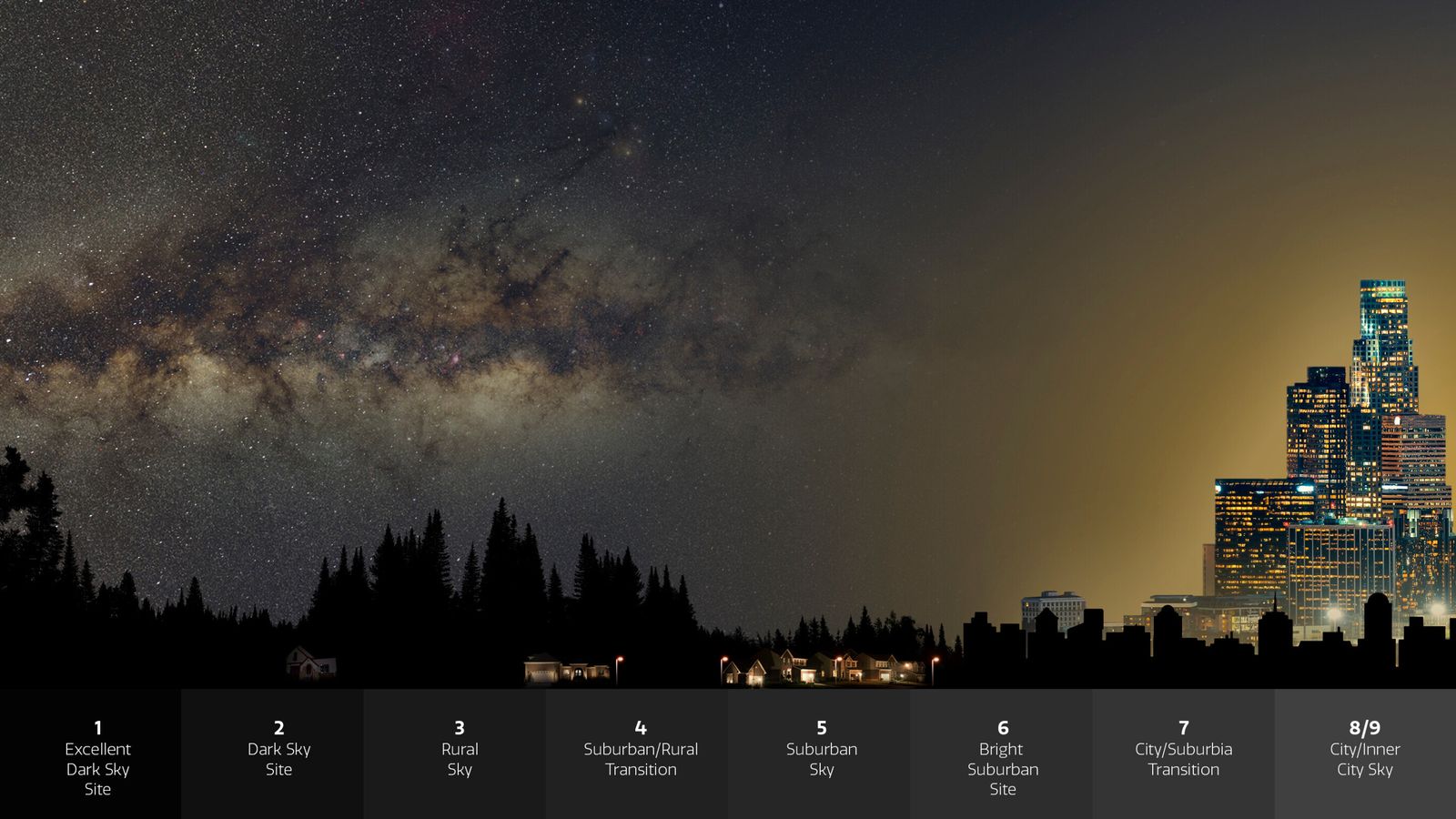Stars are disappearing before our eyes at a faster rate than originally thought, with almost a third of people around the world now unable to see any at all, according to new research.
While the unaided human eye should be able to spot several thousand stars on a clear, dark night, our view of our home galaxy – the Milky Way – and dozens of intricate constellations is rapidly being lost.
Due to light pollution, it is estimated that 30% of people worldwide have been robbed of their nightly view.
The startling figure comes via analysis from a citizen science programme called Globe at Night, which published its findings in the journal Science.
NOIRLab, a US research centre for nighttime astronomy, runs the study, which projects that a child born today in a place where 250 stars are visible would only be able to see 100 by the time they turn 18.
Astronomer Connie Walker said the findings underscore “the importance of redoubling our efforts” to protect the nighttime sky from a phenomenon dubbed “sky glow”.
What is sky glow?
Sky glow refers to the illumination of the night sky beyond that caused by natural sources, like stars or the moon.
It has long been known to be a problem, but Globe at Night’s observations suggest it is increasing far more quickly than shown in satellite measurements of the Earth’s brightness at night.
The study is based on crowdsourced reports from all over the world, with people submitting their findings online.
They are then shown a number of star maps and record which one best matches what they can see in the sky, providing an estimate of what’s known as “the naked eye limiting magnitude”.
This is a measure of how bright an object must be in order to be seen, and estimates the brightness of sky glow.
Globe at Night’s findings are based on more than 50,000 observations submitted from Europe and North America between 2011 and 2022.
Read more:
Ghostly remains of dead star revealed
How the Earth looks different from space after 50 years
Why should we be concerned?
Light pollution doesn’t just spoil the view of the sky, it can also impact our health – and that of wildlife.
This is because it disrupts the natural cyclical transition from sunlight to starlight that we and other organisms have evolved alongside – and sky glow is anything but natural.
Humans have generally had an awe-inspiring view of the starry night sky throughout history, but the path we are on now means that an ever-increasing number of people are losing out.
The loss of visible stars reported by Globe at Night indicates an increase in sky brightness of 9.6% per year over the past decade, much more than the 2% measured by satellites.
“This shows that existing satellites aren’t sufficient to study how Earth’s night is changing,” said study lead author Christopher Kyba, of the German Research Centre for Geosciences.
And while the new findings are focused on the western world, the paper notes that the sky is likely brightening more quickly in developing countries, where the prevalence of artificial lighting is growing at a higher rate.
“The increase in sky glow over the past decade underscores the importance of redoubling our efforts and developing new strategies to protect dark skies,” said Connie Walker.
“The Globe at Night dataset is indispensable in our ongoing evaluation of changes in sky glow, and we encourage everyone who can to get involved to help protect the starry night sky.”












